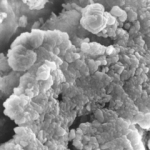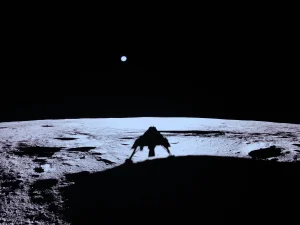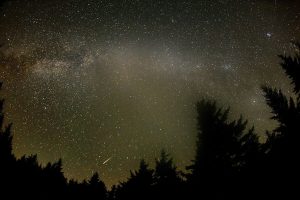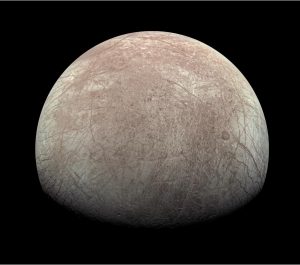
Global Space News: Solar array deployment efforts for NASA’s Lucy spacecraft
Shortly after launch in October last year, NASA mission Lucy ran into trouble. The spacecraft is headed for the Jupiter Trojans, two groups of asteroids that share the giant planet’s orbit around the Sun. As Jupiter sits in the dark and cold outer Solar System, Lucy is equipped with two large solar arrays to provide power to the spacecraft. The solar arrays were stored compactly for launch, and designed to unfurl like circular fans once in space. One of the two solar arrays achieved this successfully, but the second was only partially deployed and unable to latch at the fully open position.
Since this discovery, the Lucy team have been working on tackling this issue. At the end of June, NASA reported that the second solar array is now only a few degrees short of full deployment and is hoped to be sufficiently stable to withstand the mission.
Such challenges after launch are far from being unique to Lucy. As Associate Professor Satou Yasutake comments, one of the big challenges in space engineering is the inability to test the spacecraft actually in space.
Despite the trouble, I think it’s really wonderful that the Lucy team have recovered to the point where the mission can continue. According to one particular site, it seems that the cable that drives the solar array deployment lost tension and became entangled in the motor shaft. This situation was probably difficult to reproduce on the ground, due to the behaviour of the flexible cable in the microgravity of space. The Structural Mechanics Team at the ISAS is conducting research and development on a daily basis to improve the reliability of this kind of mechanism, but unexpected phenomena can still occur. In such moment, I hope I can be a person who can overcome the difficulties by uniting as a team and looking ahead together.
Satou Yasutaka, Department of Spacecraft Engineering
ISAS has certainly experienced problems after the mission launch. One of the most nail biting was for the first Hayabusa mission, which was struck by one of the biggest solar flares in recorded history just a few months after launch. The damage from the flare and later problems had to be countered by the team on Earth to ensure the spacecraft could successfully collect a sample from asteroid Itokawa and bring this safely home. Hayabusa2 Former Mission Manager Yoshikawa Makoto recalls the tenacity it takes to see a mission through to success.
I was happy to hear that the solar array on the Lucy spacecraft has now been almost fully deployed. For spacecraft, many different kinds of trouble can occur. Perhaps the most impressive for encountered issues was Hayabusa.
Hayabusa encountered many difficult situations, such as failure of the attitude control device, interruption in communication, the chemical engine becoming unusable after a fuel leak, and the break down of the ion engines. However, the Project members also did not give up, pursing even the slightly possibility to find a solution, and finally succeeded in returning the spacecraft to Earth. It is important not to give up until the end!
When Hayabusa retuned to Earth, the spacecraft could no longer control its trajectory well and so flew into the Earth’s atmosphere and burned up. I cried when I saw the video, but all this experience during Hayabusa was put to use in the following mission, Hayabusa2.
Yoshikawa Makoto, Hayabusa2 Mission Manager (former)
While it is thought that Lucy’s misbehaving solar array will be able to complete the mission in its current state, the team do intend to try and open the last few degrees to allow the array to latch properly open. However, attempts are currently on pause as Lucy’s journey towards Jupiter has taken the spacecraft temporarily into a region of poor communication with Earth. This is a planned part of routes through the Solar System, but can also be an anxious time for the team as the spacecraft cannot receive commands from Earth should a problem occur. Assistant Professor Stefania Soldini at the University of Liverpool describes how the Hayabusa2 spacecraft had to be sent on a special orbit to keep it safe during a period where communication with the Earth was blocked.

LUCY is currently in a period of limited communication, which is very common during space missions. Between November – December 2018, asteroid Ryugu was in the Sun’s shadow as seen from Earth; a state known as superior solar conjunction. The Earth-Sun-Ryugu alignment prevented the Hayabusa2 spacecraft from relying communications with our ground stations as the solar corona disrupted the radio signal. This required reviewing the original operation plan, as keeping the spacecraft at its nominal distance of 20 km from Ryugu was no longer possible.
In order not to risk a collision with Ryugu while communications were disrupted, we placed the spacecraft slightly further away from the asteroid in a “conjunction transition orbit” towards the Sun, reaching a maximum safety distance from Ryugu of 109 km. This particular trajectory named “ayu” conjunction trajectory and lasted for 38 days. It turned out to be a robust solution for spacecraft experiencing solar conjunction while hovering around a minor body.
Stefania Soldini, Assistant Professor & UKRI FL Fellow, University of Liverpool
The name “ayu” means “sweetfish” in Japanese, referring to the fish-like shape of the path Hayabusa2 took during the risky period of solar conjunction. Hayabusa2 safely completed the solar conjunction operation on December 29, 2018. We wish the Lucy team absolute success as they wait for the spacecraft to reconnect with Earth and head onwards to explore the Trojan asteroids for the first time in history.
Further Information:
Global Space News: NASA’s Lucy mission heads for the Jupiter Trojans
Lucy mission website (external site)
Hayabusa2 Mission Website



 Previous Post
Previous Post Next Post
Next Post






